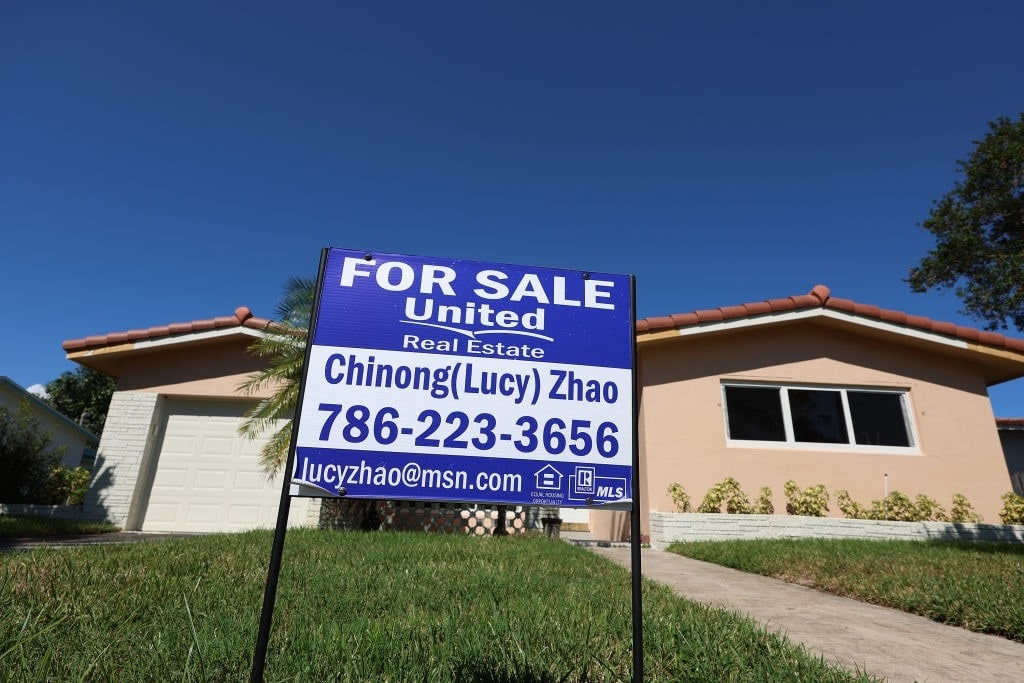The US real estate market is broken. The Federal Reserve slashing interest rates to zero during the coronavirus pandemic, effectively cutting mortgage rates to their lowest levels on record, had been the main factor in the housing sector’s destruction in the last few years. Decades of lackluster construction activity, egregious red tape, and valuations exceeding incomes also have contributed to the annihilation of housing affordability the country faces today. Over the last year, existing home sales data have served as a key barometer for the industry’s health – or lack thereof.
Existing Home Sales in November
According to the National Association of Realtors, existing home sales rose 0.8% in November, totaling a seasonally adjusted annual rate of 3.82 million. Compared to the same time a year ago, existing home sales tumbled more than 7%, down from 4.12 million units. What makes the statistic a compelling piece of evidence that the real estate market has been eviscerated is that existing home sales have fallen for eight of the first 11 months of 2023. Additionally, there has been mostly a divergence between existing home sales and new home sales throughout the year as prospective buyers scoop up newly built properties since they are what is available.

(Photo by Smith Collection/Gado/Getty Images)
Meanwhile, housing inventory dropped 1.7% from October, with only 1.13 million units available. Median existing home prices for all residential property types surged 4% year-over-year to $387,600.
“The latest weakness in existing home sales still reflects the buyer bidding process in most of October when mortgage rates were at a two-decade high before the actual closings in November. A marked turn can be expected as mortgage rates have plunged in recent weeks,” said Lawrence Yun, the chief economist at NAR, in a statement. “Home prices keep marching higher. Only a dramatic rise in supply will dampen price appreciation.”
Indeed, mortgage rates have played an integral part in the overall housing market. After firming above 7% in October amid intense volatility in the US Treasury market, the 30-year fixed-rate mortgage has slumped below 7% for the first time since August, recent data from Freddie Mac’s Primary Mortgage Market Survey show. The steady decline in borrowing costs has fueled six consecutive weekly increases in mortgage applications. But there was a notable 1.5% decrease for the week ending Dec. 15, according to recent Mortgage Bankers Association figures.
The modicum of good news in this saga is that new housing construction popped in last month. The US Census Bureau reported that housing starts soared nearly 15% last month, up from a downwardly revised 0.2% in October, totaling 1.56 million units. At the same time, this was offset by the 2.5% decrease in building permits in November. Plus, they are still way down across 55 metro areas since the global financial crisis.
Icy US Housing Is Thawing?
Suffice it to say, the US housing market has been on ice for the last year. Anyone who purchased a home before the Federal Reserve’s quantitative tightening campaign is sitting comfortably in a lounge chair with a 3% mortgage. Why bother to absquatulate from your humble abode to buy a more expensive detached property at a higher mortgage rate? New housing construction activity is not keeping up with population growth, real estate prices have far exceeded income growth, and renting (surprisingly) is cheaper than owning now.
Looking ahead, market analysts anticipate that conditions could start to improve in 2024 because of moderating inflation and lower interest rates. However, the fundamental issues are still prevalent in real estate, mainly limited stocks. Hines, a global real estate developer and investment firm, projects that the nation is more than three million homes short, meaning there are not enough homes to keep up with the jump in households. “We’re not going to overcome this deficit anytime soon just building single-family housing,” Hines managing director Ryan McCullough told Axios.
Until more supply comes to the market, costs to acquire a residential property could keep inching higher, pricing millions out of the American Dream. Will the situation spiral out of control, like the real estate market north of the border, or will conditions stabilize? The country might not be in a recession, but it is seeped in a cost-of-living crisis.




